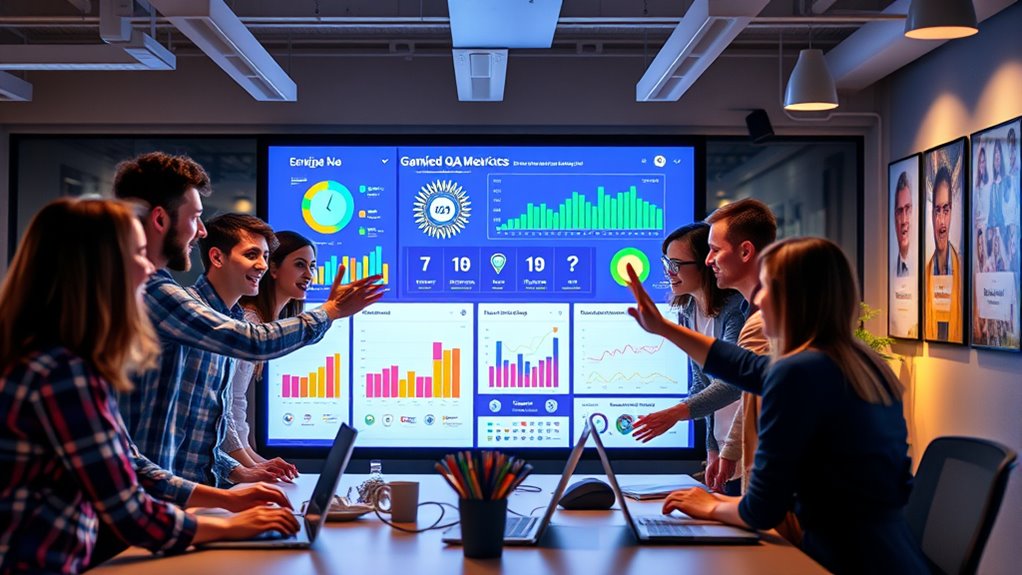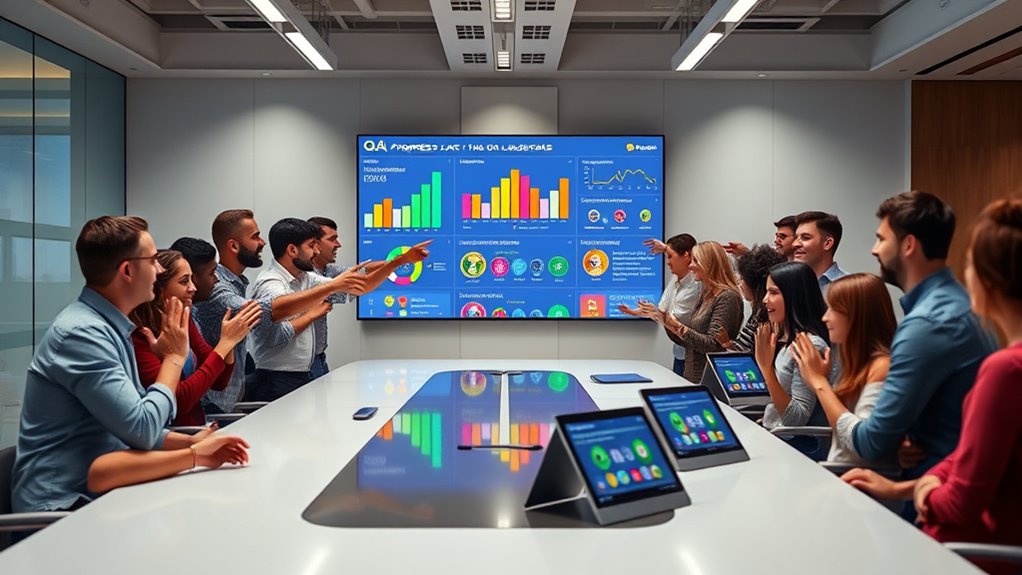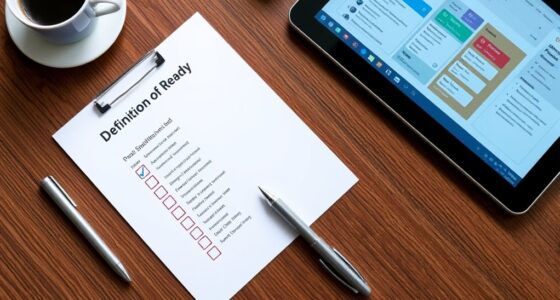Gamifying QA processes makes testing more engaging and motivates your team by adding game-like elements such as points, badges, and leaderboards. You can customize challenges based on skill levels to keep everyone motivated, whether they’re beginners or experts. Rewards and recognition encourage continuous improvement and help identify top performers. By fostering friendly competition and celebrating progress, you create a teamwork-oriented environment that drives higher quality results—discover more strategies to energize your QA efforts.
Key Takeaways
- Incorporate game elements like points, badges, and leaderboards to motivate testers and foster friendly competition.
- Customize challenges based on individual skill levels to promote continuous learning and confidence.
- Use recognition systems to reward achievements, such as identifying tricky bugs or passing tests, enhancing morale.
- Visual progress tracking and rewards encourage ongoing participation and reinforce positive testing habits.
- Combine creative themes, inspired by anime or animation, to make testing engaging and inspire innovative problem-solving.

Gamifying QA processes transforms routine testing into an engaging experience that boosts team motivation and efficiency. When you introduce game-like elements into your quality assurance workflows, you tap into your team’s natural drive for achievement and recognition. Reward systems become central to this approach, offering tangible incentives such as points, badges, or leaderboards that foster friendly competition. These rewards motivate team members to perform at their best, making the testing process less monotonous and more rewarding. As you implement these systems, you’ll notice increased participation and enthusiasm, which directly correlates with improved defect detection and faster turnaround times.
One of the key benefits of gamification is that it allows you to tailor challenges according to skill levels. Instead of applying a one-size-fits-all approach, you can create tiered tasks that match each team member’s expertise. For beginners, simpler challenges help build confidence and foundational skills. More experienced testers can tackle complex scenarios, earning higher rewards and advancing through levels. This scalability keeps everyone engaged without feeling overwhelmed or under-challenged. By clearly defining skill levels within your reward system, you provide a sense of progression that encourages continuous learning and growth. As team members see their skills improve and their achievements recognized, their motivation naturally increases, leading to higher quality results.
Furthermore, integrating skill levels into your reward system creates a transparent environment where progress is visible and celebrated. You can set up badges or titles that reflect specific competencies, making skill development tangible. When testers earn a badge for identifying tricky bugs or passing rigorous tests, they gain a sense of accomplishment. This recognition not only boosts individual morale but also fosters a culture of excellence within your team. As each member advances through different skill levels, they become more confident and capable, driving overall team performance upward. This continuous cycle of skill-building and reward reinforces positive habits, turning QA into a more dynamic and satisfying process.
In addition, referencing anime movies and animated films that touch hearts can inspire creative thinking and storytelling approaches within your team, fostering a more engaging environment. In essence, by combining reward systems with carefully calibrated skill levels, you create a gamified environment that encourages ongoing improvement. You motivate your team through recognition, challenge, and a sense of achievement, transforming routine testing into a more engaging and productive activity. When your team feels rewarded and sees tangible progress, they’re more likely to stay committed, collaborate effectively, and deliver higher-quality results. Gamifying QA processes isn’t just about making testing fun; it’s a strategic way to elevate your entire quality assurance operation.
Frequently Asked Questions
How Do You Measure Success in Gamified QA Initiatives?
When evaluating success, you should focus on performance metrics and user engagement. Track improvements in testing accuracy, defect detection rates, and cycle times to measure performance. Additionally, monitor how actively team members participate, complete challenges, and stay motivated through gamification. If these metrics show positive trends, you can confidently say your gamified QA initiatives are working, boosting both efficiency and team enthusiasm.
What Are Common Challenges When Implementing Gamification in QA?
When you introduce gamification to QA, you might face challenges like maintaining team motivation and managing resistance. Some team members may resist change or feel the game elements are unnecessary, making engagement difficult. To overcome this, you need to communicate benefits clearly, involve your team early, and tailor activities to their interests. Managing resistance and boosting motivation are key to successful gamification implementation.
How Can Gamification Be Tailored for Remote QA Teams?
To tailor gamification for remote QA teams, you should focus on virtual badges and creative leaderboard designs. Use virtual badges to recognize individual achievements and motivate continuous improvement. Keep leaderboard design engaging and transparent to foster friendly competition and team spirit. Regular updates and remote-friendly tools guarantee everyone stays connected and motivated. This approach helps boost engagement and maintains high performance, even when your team operates from different locations.
What Tools Support Effective Gamification of QA Processes?
Did you know that 70% of users report increased engagement with effective reward systems? To support gamification of QA processes, you can use tools like Jira with plugins like GamePlan or Trello combined with Butler automation, which make tracking progress easy. These tools help you implement reward systems that boost user engagement, ensuring your remote QA team stays motivated and productive while enjoying a fun, rewarding workflow.
How Do You Balance Competition and Collaboration in Gamified QA?
Balancing competition and collaboration in gamified QA relies on your motivational strategies and understanding team dynamics. You can foster healthy competition by setting clear goals and rewards, encouraging team members to push themselves. Simultaneously, promote collaboration through shared challenges and collective achievements, ensuring everyone feels valued. By adjusting these elements based on your team’s responses, you create a motivating environment that enhances engagement while maintaining harmony.
Conclusion
By gamifying your QA processes, you turn routine tasks into a vibrant playground of challenges and rewards. Imagine your team’s engagement soaring like a kite caught in a steady breeze, fueled by curiosity and competition. When you sprinkle in elements of fun, quality assurance transforms from a chore into an exciting adventure. Embrace this approach, and watch your team’s motivation bloom like spring flowers, releasing higher standards and a more spirited workflow.









